How to Select a Mechanic Truck with Crane
11.14.22
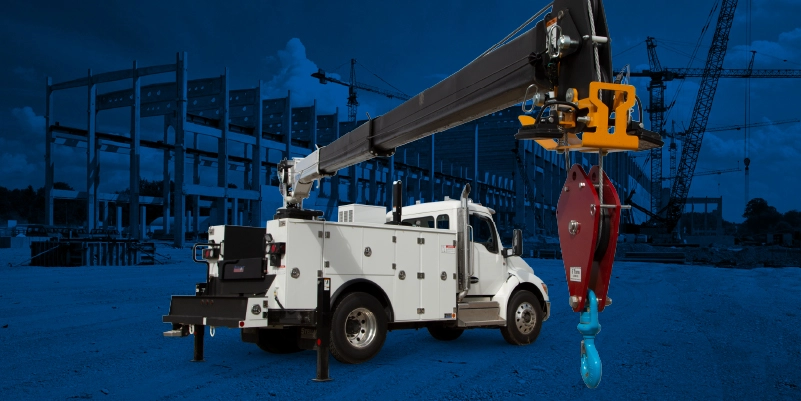
A strong argument could be made that mechanic trucks are the most productive piece of equipment used in industries such as construction, forestry, government, oil and gas, mining and utility construction. A big reason why is that the ideal mechanic truck includes a service crane.
A service crane adds tremendous versatility to a mechanic truck, allowing it to be used to move heavier equipment or material loads, lift heavy parts to speed up servicing of equipment, place or remove materials around obstacles or where space is limited, and much more.
But how do you know which crane type and size is best for your needs? Our knowledgeable team can help you with mechanic truck with crane selection, and the information here will help you get started.
Service Trucks and Cranes Sized Right
Service crane selection is a critical factor in getting the best mechanic truck with crane package for your needs. Understanding the most common uses for your crane plays an essential role in selection, and it’s pretty easy to understand: the more heavy-duty the work, the more heavy-duty the crane.
You don’t want a crane that’s too small for the job, because it might not be able to handle the work or could cause an operator to create a safety issue by using the equipment in a way it’s not intended for. Going too big is a problem, too, because over-investing in equipment is a drag on your bottom line.
It’s also essential to understand that a mechanic truck truly is more than the sum of its parts. The service body, crane and chassis must be a perfect fit to get the performance you want and the reliability you need. So, if you know the desired lifting capacity of your crane, you can determine the matching mechanic truck body and chassis size needed to handle the forces. Or if you have a specific chassis that you want to use, you can determine which mechanic truck bodies and crane sizes will work with it. The weight of the crane and body, and the lifting capacity of the crane, are constrained by your chassis’ gross vehicle weight rating (GVWR).
Reviewing the five questions below with your manufacturer or distributor will help you get the ideal service crane for your needs.
5 Questions to Answer Before Selecting a Service Crane
1. What will I be lifting?
Think about the purpose of your truck and the tasks you’ll be handling. What exactly will the crane be lifting and at what distance? For example, will the crane be used to perform lifts for general service (light- or heavy-duty), heavy equipment repair, agriculture repair, or construction? Using construction field service as an example, loads lifted might include cylinders, buckets, blades, tracks, engines, transmissions and more. Understanding the demands of what you’ll be lifting goes a long way toward crane selection.
2. How much does the load weigh?
A crane’s load capacity varies by the length of the reach, so having an idea of the likely weight you’ll need to lift and at what distance is essential for crane selection. Crane ratings are measured in foot pounds (ft-lb). Foot pounds are the weight multiplied by the horizontal lifting distance. For example, 42,000 foot-pounds equals a lift capacity of 4,200 pounds at 10′. Or 2,100 pounds at 20′. Or 8,400 pounds at 5′.
Pictured is an example of a crane’s load chart, which shows how much the crane can pick up at what angle and at what distance. Stellar provides a load chart for each crane model.
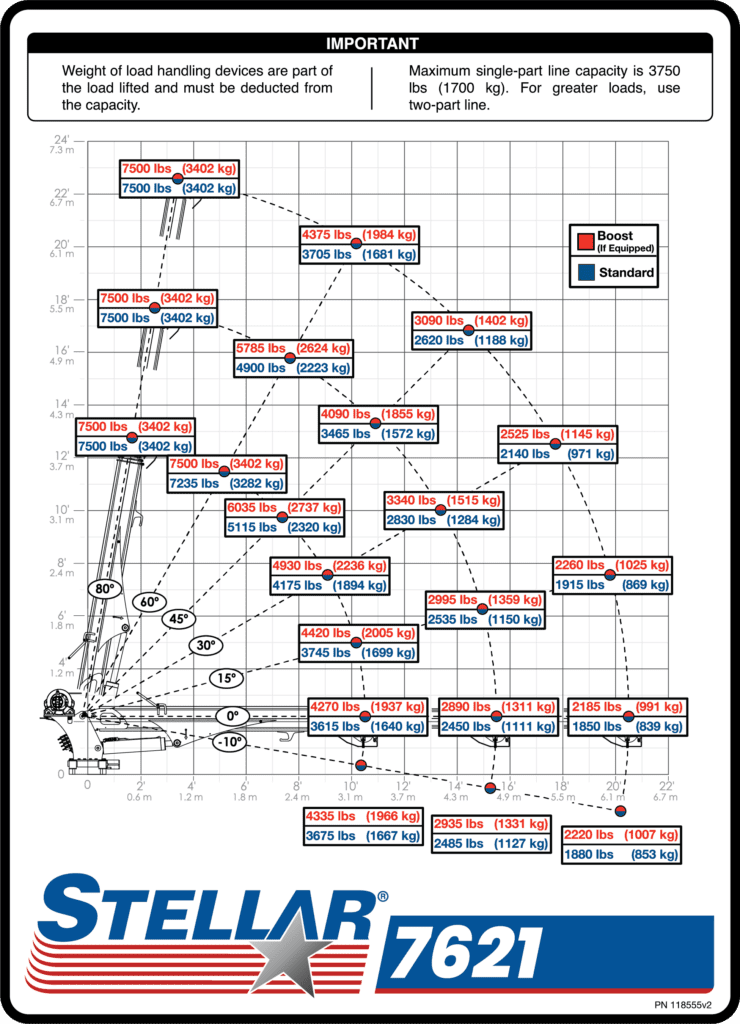
Stellar load charts show red and blue, with red representing boost mode. Boost mode gives you an extra 18% of crane capacity for 30 seconds, eliminating the need to reposition the truck or bring in a larger crane to alleviate overload conditions.
3. How many lifts or duty cycles per day/week?
This question gets to the core of whether an electric crane will work or if you’ll need a more heavy-duty hydraulic crane.
Electric cranes offer a lower cost solution, so if your budget is limited, your lifting needs are relatively light, and your duty cycle is intermittent throughout the week or month, then an electric crane might be for you. For regular use and frequent lifts that would go beyond an electric crane’s capabilities, manufacturers offer a spectrum of hydraulic service cranes to meet most lift and reach needs in the field.
Stellar’s Service Crane offering includes Electric Cranes, light-duty Electric-Hydraulic Cranes and heavy-duty Hydraulic Cranes, among other options. The chart below provides a quick comparison, and you can download the complete version.
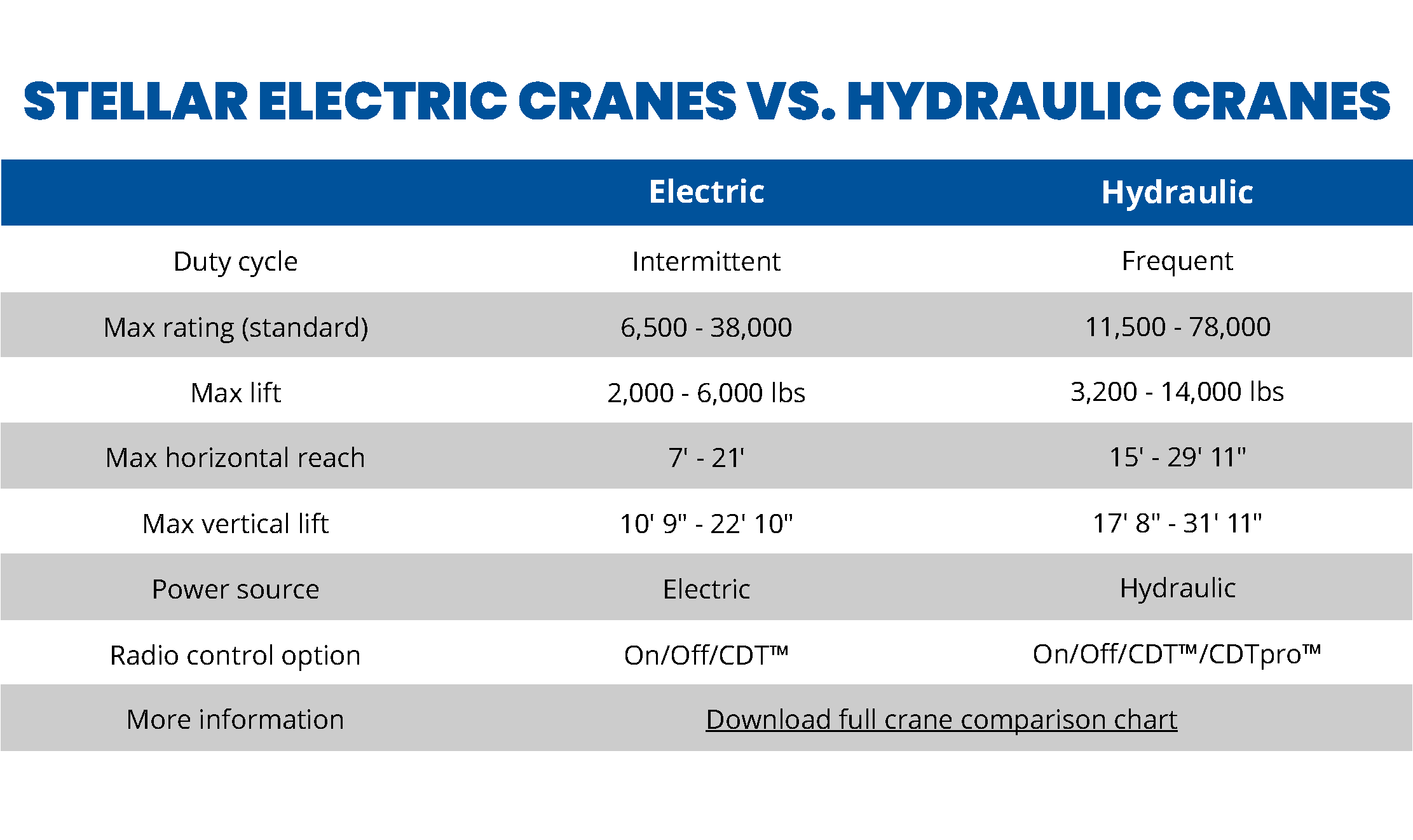
4. What is the chassis size?
The three elements in your decision are always the chassis, mechanic body and service crane. You can start with any of them. The chart below shows how to select a mechanic truck body based on the service crane and chassis. As always, our knowledgeable team or your distributor can help you pick the best starting point.
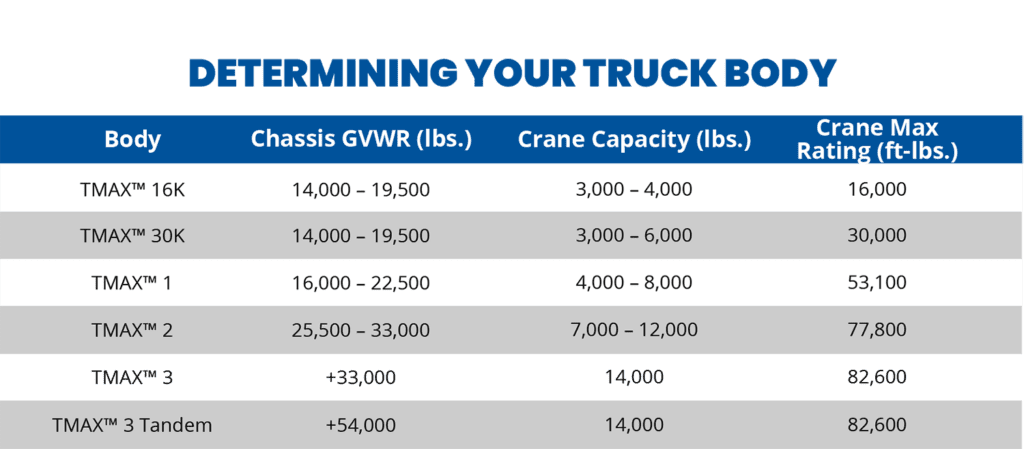
Mechanic truck bodies are designed to handle the forces of a range of cranes, subject to the GVWR requirements of both the chassis and body. Some examples:
- The TMAX™ 16K is used on Ford® chassis like F-350 or F-550 and for cranes with capacities up to 4,000 pounds.
- The TMAX™ 30K is used on Ford® chassis like the F-350 or F-550 and for cranes with capacities up to 6,000 lbs.
- The TMAX™ 1 is used on a medium chassis like Ford® F-550 or F-600 and for cranes with capacities up to 8,000 lbs.
- The TMAX™ 2 is used on larger chassis like a Kenworth T370 and can handle cranes with capacities up to 12,000 lbs.
- The TMAX™ 3 is designed to fit larger, tandem-axle chassis such as a Peterbilt 389 and for cranes with capacities up to 14,000 lbs.
5. What are other considerations for a mechanic truck with crane?
Two additional areas to consider are remote control and weight-saving opportunities.
Remote control technology
There’s a trend toward manufacturers improving their control systems to offer more precise crane movement as well as provide feedback to the operator on crane performance and lift data.
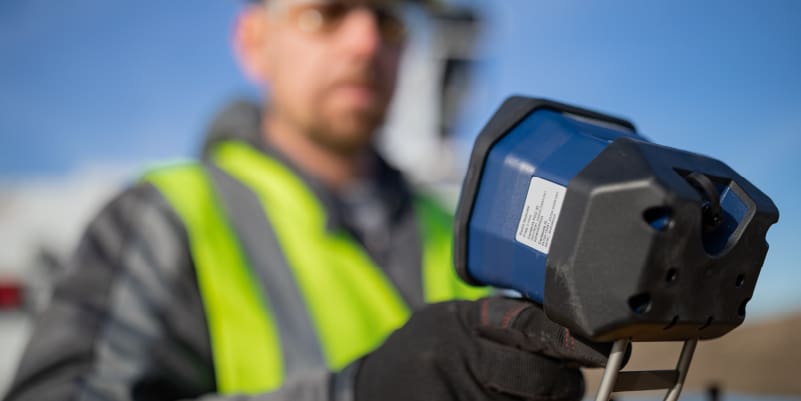
For example, Stellar’s new CDTpro™ control system with Range Finder™ technology for Hydraulic Cranes helps you save time by knowing your crane can lift the load before you set up. The innovative, industry-only Range Finder technology provides real-time max lifting capacity from any point around the crane. The ergonomic design ensures operator comfort, and the control system allows for multiple functions to run at the same time. It’s all designed to make the operator’s job easier. Check out CDTpro videos to learn more.
Weight-saving opportunities
Stellar engineers have worked hard to produce lighter weight cranes that help maximize payload for customers. For example, we recently introduced redesigned 76 Series hydraulic cranes that feature an overall average reduced weight of 20 percent compared to previous models. The boom was updated from a hexagonal design to octagonal. Newly introduced 96 Series, 106 Series and 126 Series cranes offer an overall average weight savings of 11%, or around 330 lbs for 30′ cranes or 210 lbs for 21′ cranes.
Stellar’s electric crane lineup includes the lightweight and corrosion-resistant EC3200 aluminum telescopic crane, which was launched in 2019 as the mechanic truck market’s only aluminum service crane. The EC3200 is 230 pounds lighter than its steel counterpart, so operators can carry more on their truck without sacrificing strength. You can also take advantage of Stellar aluminum mechanic truck bodies with lighter weight to help save payload and provide corrosion resistance for longer truck life.
For more information, see what one mechanic had to say about our cranes, contact us or find a Stellar distributor.
Interested in the history of mechanic trucks?
Check out industry veteran Tim Davison’s appearance on the Digging Deeper podcast on Apple Podcasts or online.
